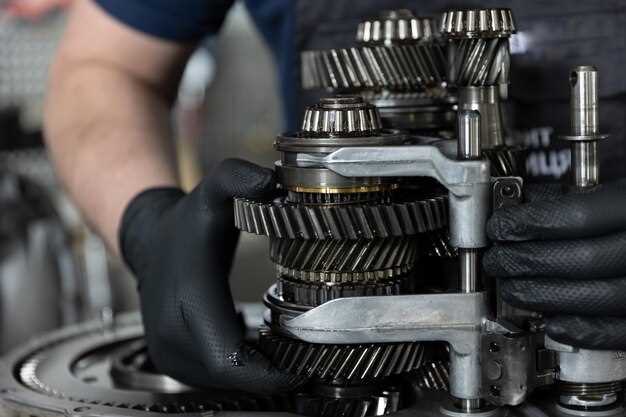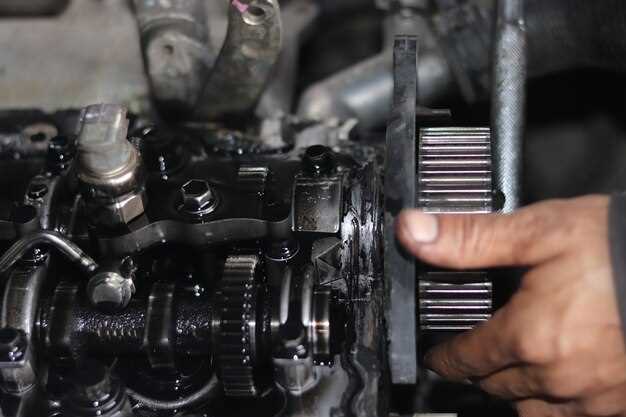
Rebuilding a high-performance transmission is both an art and a science, requiring meticulous planning and execution. A well-functioning transmission is crucial for optimal vehicle performance, and the process of rebuilding it can profoundly impact acceleration, efficiency, and overall drivability. This guide aims to provide a comprehensive overview of the essential steps, materials, and considerations involved in the rebuilding process.
Understanding the fundamental components of a transmission is paramount. From clutches and gears to fluid dynamics, each element plays a vital role in how power is transferred from the engine to the wheels. By dissecting these components, one can gain insight into potential weaknesses and areas for improvement, paving the way for a transformative rebuild.
This guide will explore not only the technical aspects of transmission rebuilding but also share best practices, tools required, and common pitfalls to avoid. Whether you’re a seasoned mechanic or an enthusiastic hobbyist, the information herein will equip you with the knowledge needed to tackle this challenging yet rewarding project and ensure your high-performance transmission operates at its peak potential.
Choosing the Right Components for Transmission Rebuild

When undertaking a transmission rebuild, selecting the appropriate components is crucial for achieving optimal performance and longevity. Each part plays a significant role in the overall function of the transmission, making it essential to choose high-quality components that can withstand the demands of your vehicle.
1. Gaskets and Seals: These are vital for preventing leaks and maintaining hydraulic pressure. Opt for OEM (Original Equipment Manufacturer) gaskets and seals or high-performance aftermarket options made from durable materials. This helps ensure a tight seal and reduces the risk of premature failure.
2. Clutch Packs: Upgrading to heavy-duty clutch packs can enhance the performance of your transmission, especially if your vehicle experiences higher torque loads. Look for clutch packs that incorporate advanced friction materials, as they provide better grip and durability.
3. Band Adjusters: Upgraded band adjusters offer improved tension control and can significantly affect shift quality. Ensure that the adjusters you choose are compatible with your specific transmission model to optimize functionality.
4. Valve Body Components: The valve body is critical for controlling fluid flow. Consider replacing worn solenoids and springs to enhance shifts. Performance-oriented valve bodies are also available for those looking to maximize responsiveness.
5. Torque Converter: A high-performance torque converter can greatly influence acceleration and engine efficiency. Select a converter that matches your vehicle’s performance goals, whether that be increased stall speed for racing applications or enhanced torque multiplication for towing.
6. Transmission Fluid: Lastly, using the correct transmission fluid is essential. It impacts not only lubrication but also the system’s cooling efficiency. Choose a fluid that meets or exceeds the specifications outlined by the manufacturer for optimal performance.
In conclusion, the success of your transmission rebuild hinges on the components you select. Prioritize quality and compatibility to ensure your rebuild provides the desired performance and reliability.
Step-by-Step Process for Disassembling and Inspecting Transmission
Begin by ensuring you have a clean and organized workspace. Gather essential tools such as socket wrenches, screwdrivers, pliers, and a torque wrench for assembly. Position the transmission on a sturdy workbench to facilitate disassembly.
Start the disassembly by removing the transmission from the vehicle. Disconnect associated components like the driveshaft, shift linkage, and electrical connectors. Carefully detach the bell housing bolts and separate the transmission from the engine.
Once on your workbench, drain the transmission fluid completely. Locate and remove the transmission pan by unscrewing the bolts. Carefully lift the pan to avoid spilling residual fluid. Inspect the transmission pan for metal shavings or debris, which can indicate internal wear.
Proceed to remove the transmission filter, which is typically secured with screws or clips. After replacement, inspect the filter for any contaminants that may signal issues within the transmission.
Next, remove the valve body, which is crucial for controlling fluid flow. Unscrew the valve body bolts and gently lift it out. Ensure you document the arrangement of any solenoids or components for reassembly.
With the valve body removed, examine the internal components like clutches, bands, and gears. Check each part for signs of wear, cracking, or discoloration. Utilize a digital caliper to measure clutch thickness and verify if they are within specifications.
Inspect the torque converter for signs of damage or fluid leaks. If any issues are identified, consider replacing the converter to ensure optimal performance. Verify all seals and gaskets for wear, as these can cause leaks and compromise efficiency.
After a detailed inspection, clean all components thoroughly using solvent. Ensure any old sealant is removed from mounting surfaces to prevent future leaks. Organize the cleaned parts for easy reassembly.
Finally, document your findings and any necessary repairs. If components need replacement, source OEM parts to maintain transmission performance. Be thorough in your inspection, as attention to detail will ensure a high-performance rebuild.
Tuning and Testing Your Rebuilt Transmission for Optimal Performance

After completing the rebuild of your transmission, the next crucial step is tuning and testing to ensure optimal performance. Proper tuning not only enhances the responsiveness of your vehicle but also extends the lifespan of the transmission.
Initial Inspection: Before any tuning begins, conduct a thorough inspection of the rebuilt transmission. Check for any leaks, loose connections, or visible wear in components. Ensure that the fluid levels are correct and the right type of fluid is used as specified in the manufacturer’s guidelines.
Fluid Replacement: Replace any existing fluids with new, high-quality transmission fluid. Fresh fluid helps in better lubrication of internal components and ensures effective heat dissipation. Consider using a fluid with enhanced additives for improved performance.
Adjusting Shift Points: Modify the shift points to match your driving style. Using an appropriate tuning tool, adjust the transmission’s control module settings. Lowering shift points can lead to faster shifts, enhancing acceleration, while raising them can improve fuel efficiency.
Testing the Transmission: After adjustments, it’s essential to test the rebuilt transmission under various conditions. Start with a stationary test to check for smooth engagement and shifting in park, neutral, and drive. Proceed with a careful road test, observing how the transmission performs under acceleration, cruising, and deceleration.
Monitoring Performance: During the road test, pay attention to how the transmission responds to throttle inputs. Listen for any unusual noises and check for slipping or harsh shifts. Make note of the engine RPM during shifts to ensure they occur at the desired points.
Fine-Tuning: Based on your testing observations, further fine-tune the settings if necessary. Adjust for any shortcomings, such as delayed shifts or harsh engagement. Iterative testing and tuning may be required to achieve the best performance possible.
Long-Term Testing: Once satisfied with the initial tuning, embark on long-term testing. Monitor how the rebuilt transmission performs over time and under varying loads. Regular checks can help identify any potential issues early, ensuring continued optimal performance.
In conclusion, proper tuning and thorough testing of a rebuilt transmission play a vital role in achieving high performance. By adhering to systematic adjustments and careful evaluations, you can maximize the efficiency and lifespan of your rebuilt transmission, ensuring a smooth driving experience.






